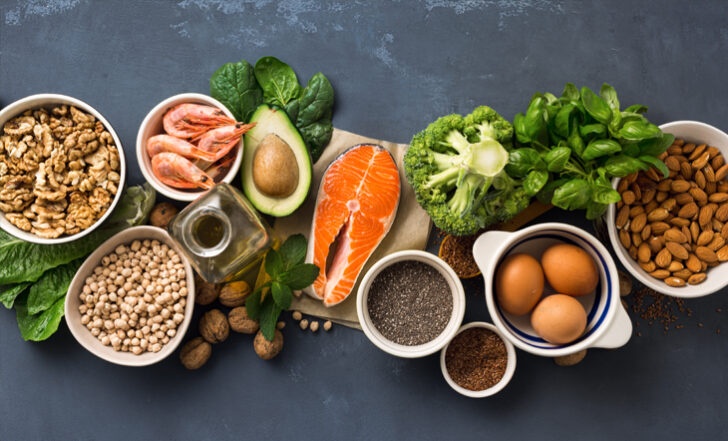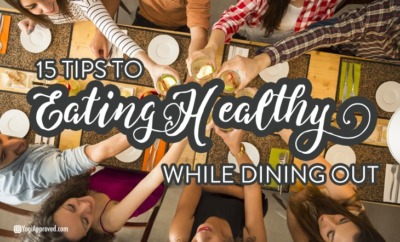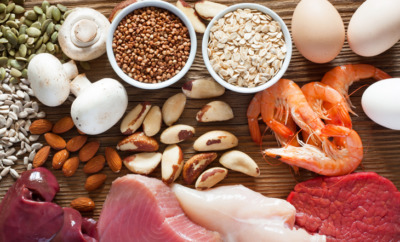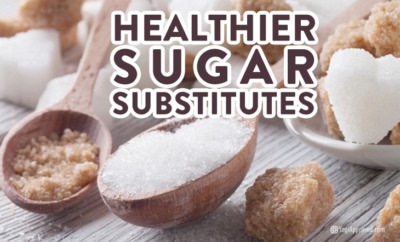The Excellence of Vitamin E: Benefits and How to Get Enough In Your Diet

When you think of Vitamin E, what comes to mind? Perhaps you recall a few skin products you’ve seen in the spa or dermatologist’s office. Maybe you’ve heard it’s a common ingredient in nuts and oils.
Vitamin E may not be a nutrient that falls on your everyday radar, but when it comes to maintaining the health of cells and body systems, it’s definitely a key player!
5 Unexpected Signs You May Be Suffering from Vitamin Deficiency
This article will discuss the health benefits of Vitamin E, the primary food sources it is found in, and the information you need to know about making this nutrient part of your well-balanced diet.
What Is Vitamin E?
Did you know the term Vitamin E actually refers to eight different forms of a chemical compound?
These compounds include alpha, beta, gamma, and delta tocopherol and alpha, beta, gamma and delta tocotrienol, and they each have a different level of biological activity.
The single nutrient we often think of as Vitamin E refers to alpha-tocopherol, which is the most active form and the one recognized as most suitable to meet human dietary needs.
What Are the Major Benefits of Vitamin E?
The most noted benefit of Vitamin E is its role as an antioxidant. Similar to selenium, it acts as a radical scavenger, protecting body cells from oxidative stress and damage caused by free radicals. It also widens blood vessels to prevent clots from forming.
These attributes may explain why it is associated with reducing risk of cardiovascular disease. Multiple observational and longitudinal studies found populations with higher Vitamin E intakes had lower rates of coronary heart disease.
The most noted benefit of Vitamin E is its role as an antioxidant.
This powerful vitamin also enhances the function of the immune system and exhibits anti-inflammatory properties.
A 2018 study by Lewis, Meydani and Wu found it assisted in maintaining the integrity of immune cell membranes and helped limit the impact of inflammatory compounds and reduce markers of inflammation in older people.
Immune System Color Wheel: A Guide to Foods That Boost Your Immunity
Studies also indicated it has a positive relationship to improved skin health.
Many skincare creams, moisturizers, oils and even lip balms contain a topical form of it. A literature review found Vitamin E, particularly in the form of oral supplements, may offer improvements in skin conditions such as atopic dermatitis.
Another potential benefit: reduced symptoms of dysmenorrhea (painful periods) in individuals who menstruate, particularly when accompanied by either Vitamin C or an omega-3 supplement containing both DHA and EPA.
Where Is Vitamin E Found?
Vitamin E is present in a variety of foods, primarily plant-based ones like nuts, seeds, fruits, vegetables and fortified cereals. It is also found in many vegetable oils and is a fat-soluble vitamin (like fellow Vitamins A, D and K), which means it is best absorbed with sources of dietary fat.
Top 5 Food Sources of Vitamin E:
1. Sunflower Seeds

These nutrient-dense seeds offer nearly half of the daily recommended intake (DRI) of Vitamin E in just one ounce! They are a quick and convenient snack by themselves but can also be added to dishes like arepas and granola and chia seed pudding bowls.
2. Almonds

This tree nut is another substantial source, bringing in 45% of the daily recommended intake in a 1 ounce serving. Almonds also boast several other nutrients including fiber, magnesium, unsaturated fats, and plant-based protein.
3. Vegetable Oils

Several kinds of oils including sunflower, safflower, corn and soybean are packed with it.
Wheat germ oil contains the highest amount of the nutrient (exceeding the DRI in just one tablespoon!), while sunflower and safflower oil are also considered high sources of Vitamin E at 37% and 31% of the DRI in a one tablespoon serving, respectively.
4. Peanut Butter

Both peanuts and peanut butter are rich in this vitamin (1-ounce of dry roasted peanuts contains 15% of the DRI while two tablespoons of peanut butter have 19% of the DRI).
You can add peanut butter to snacks like celery, bananas or apples, or simply enjoy the extra Vitamin E you’re getting in your PB&J!
5. Spinach and Broccoli

There are long lists of the nutrients that leafy greens like spinach and broccoli contain, and antioxidant powerhouse Vitamin E is another great one.
The boiled form of these vegetables offers the highest content. Try adding these cooked greens to omelets or scrambles or as a tasty and nutrient-dense side to salmon or chicken.
Please note this vitamin is dependent on other nutrients including Vitamin C, Vitamin B3 (also known as niacin), selenium and glutathione and must be part of a diet rich in these compounds to achieve its most beneficial effects.
How Much Vitamin E Should You Get?
According to the National Institute of Health the recommended intake for Vitamin E is 15 milligrams per day for individuals 14 years of age and older and 19 milligrams per day for lactating teens and women.
For reference, a 1 ounce serving of dry roasted sunflower seeds contains 7.4 mg of Vitamin E (49% of the daily value), while ½ cup of boiled spinach contains 1.9 mg (13% of the daily value).
Vitamin E deficiency is rare, but since it is fat-soluble, individuals with fat malabsorption disorders (such as Crohn’s Disease) may be at increased risk for deficiency.
These populations may need water-soluble forms of the nutrient to ensure adequate intake. Signs of deficiency may include a weakened immune response and nerve and muscle problems like ataxia (the medical term referring to impaired muscle coordination or control).
While there have not been documented adverse effects from Vitamin E intake through food, excessive Vitamin E supplementation may result in problems such as increased risk for hemorrhaging.
Because of the potential for toxicity, the tolerable upper limit for this vitamin is 800 mg daily for people 14-18 years old and 1000 mg daily for people 19 years and older.
It is also worth noting Vitamin E supplements may have potentially harmful interactions with certain medications such as anticoagulants, antiplatelets, simvastatin, niacin, chemotherapy and radiotherapy.
Always consult your doctor and dietitian before making any changes to your dietary and/or supplementation regimen.
The Takeaway
Vitamin E is an important nutrient with strong antioxidant, anti-inflammatory and immune enhancing properties. It is found in a wide array of plant foods that offer other nutritional benefits as well.
Loved learning about Vitamin E? Learn all about Potassium next! The Power of Potassium: Learn the Major Benefits + How To Get Enough In Your Diet
It is important to get adequate amounts in your diet alongside intake of other nutrients. Think of it as a supportive friend, it does best when you embrace its fellow vitamins and minerals!
All included information is not intended to treat or diagnose. The views expressed are those of the author and should be attributed solely to the author. For medical questions, please consult your healthcare provider.


This Month's Letter
From the Editor
Monthly motivation and food for
thought from our founder.






























Comments